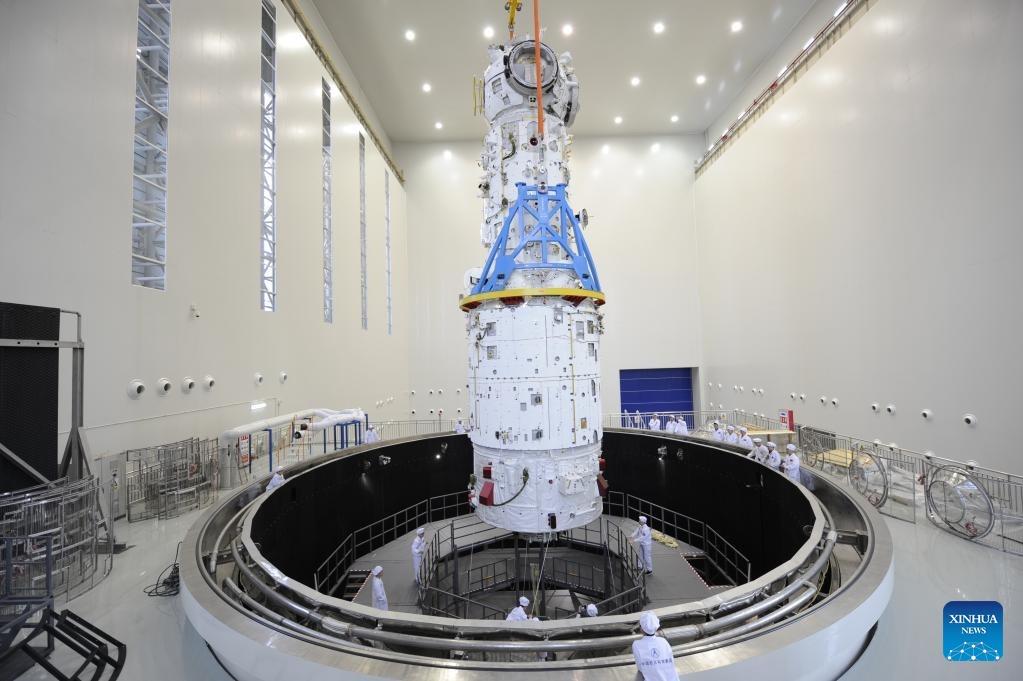 This undated file photo shows the core module of China's space station Tianhe being hoisted at a base of China Aerospace Science and Technology Corporation in north China's Tianjin. (PHOTO / XINHUA)
This undated file photo shows the core module of China's space station Tianhe being hoisted at a base of China Aerospace Science and Technology Corporation in north China's Tianjin. (PHOTO / XINHUA)
The China Aerospace Science and Industry Corp, one of the country's major space contractors, announced on Thursday that it plans to build a massive remote-sensing satellite network by 2030.
The network, which has yet to be named, will be tasked with public services like emergency response and rescue, and disaster prevention and relief, and will also be used to carry out real-time, high-resolution observation of designated areas and specific targets in accordance with users' requirements, according to CASIC Space Engineering Development, the subsidiary of the corporation in Beijing in charge of the project.
Upon completion, the system will comprise 300 remote-sensing satellites operating in extra-low orbits at altitudes of less than 300 kilometers, and will be capable of taking optical photos, radar data, and hyperspectral and infrared images
Upon completion, the system will comprise 300 remote-sensing satellites operating in extra-low orbits at altitudes of less than 300 kilometers, and will be capable of taking optical photos, radar data, and hyperspectral and infrared images.
ALSO READ: Private firm to launch rocket in 2024
By 2030, the network will be able to map and survey any given place on the globe within 15 minutes of receiving a request, the company said in a notice released on the sidelines of the 9th China International Commercial Aerospace Forum, which opened on Wednesday in Wuhan, capital of Hubei province.
Remote sensing satellites are those tasked with observing, surveying and measuring objects on Earth, as well as with monitoring weather.
ALSO READ: Long March 6 rocket carries experimental satellite to space
"We plan to launch the first satellite from the Jiuquan Satellite Launch Center in northwestern China in December. It is currently being built and will carry optical remote-sensing imagers, data processors, atomic oxygen sensors and other payloads," said Zhang Nan, chief designer of the network at CASIC Space Engineering Development.
READ MORE: Chang'e-6 to carry payloads from European space agencies
If the first satellite works, the company plans to deploy a further nine satellites of the same type and in the same orbit in 2024 to demonstrate its networking technology and establish a trial-run system, Zhang said.


